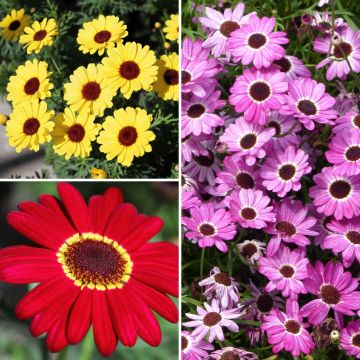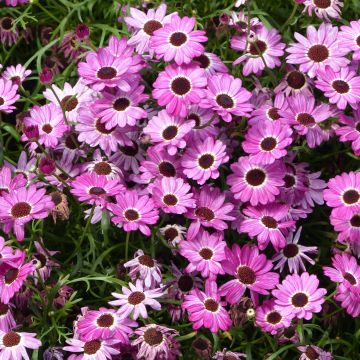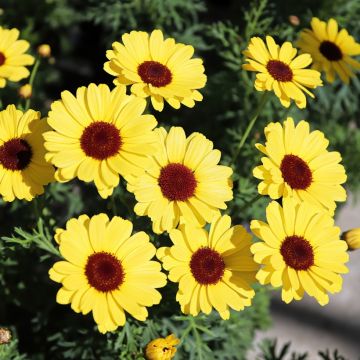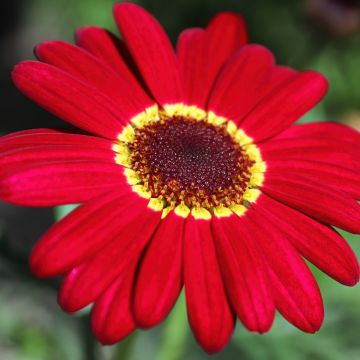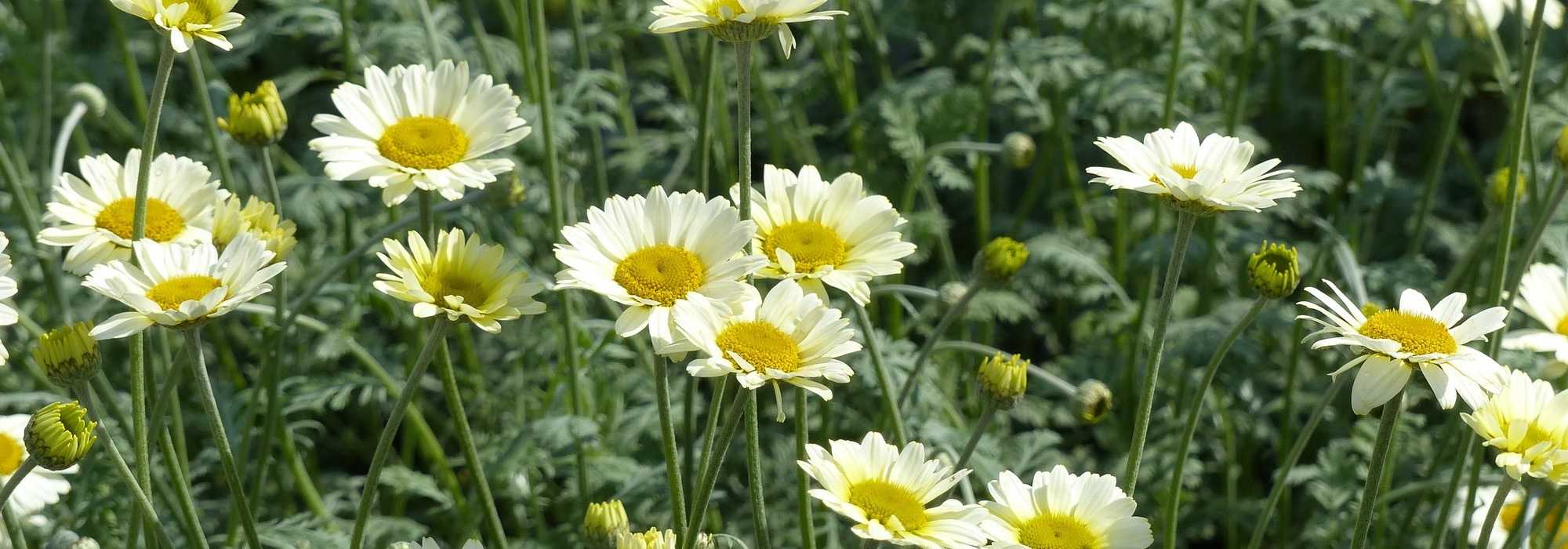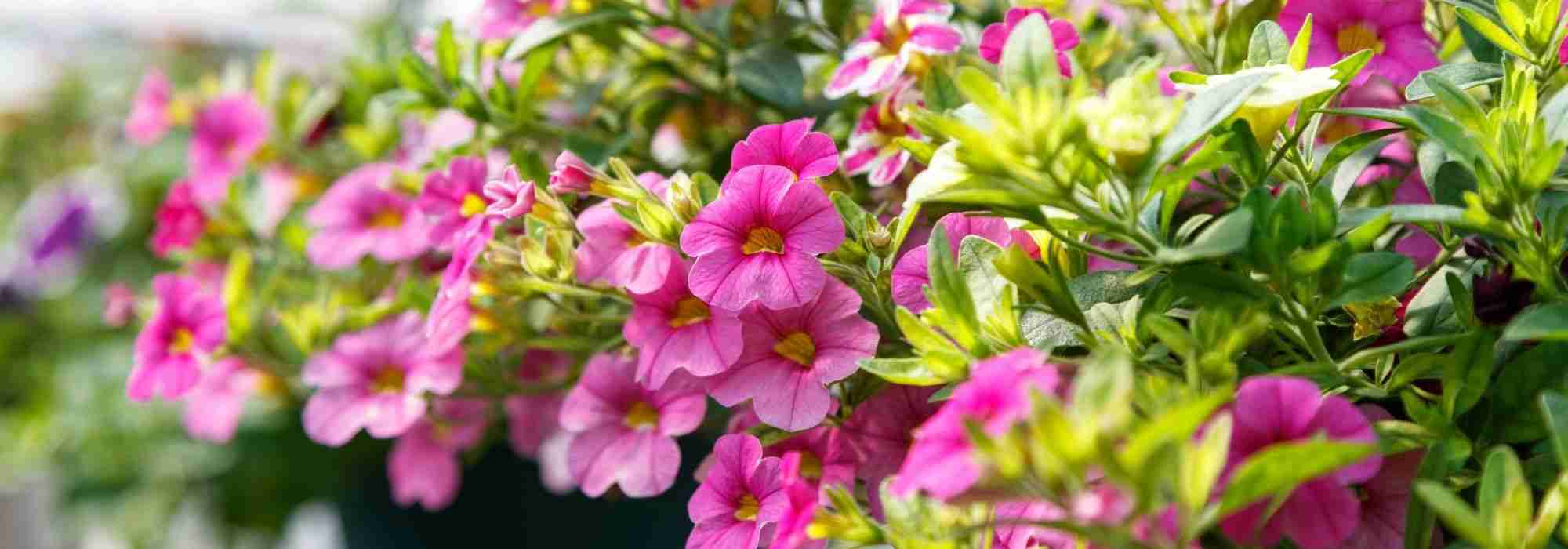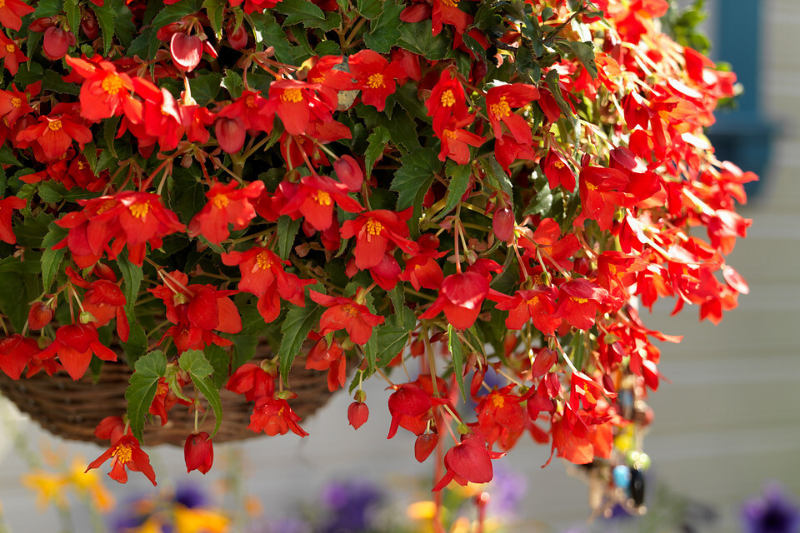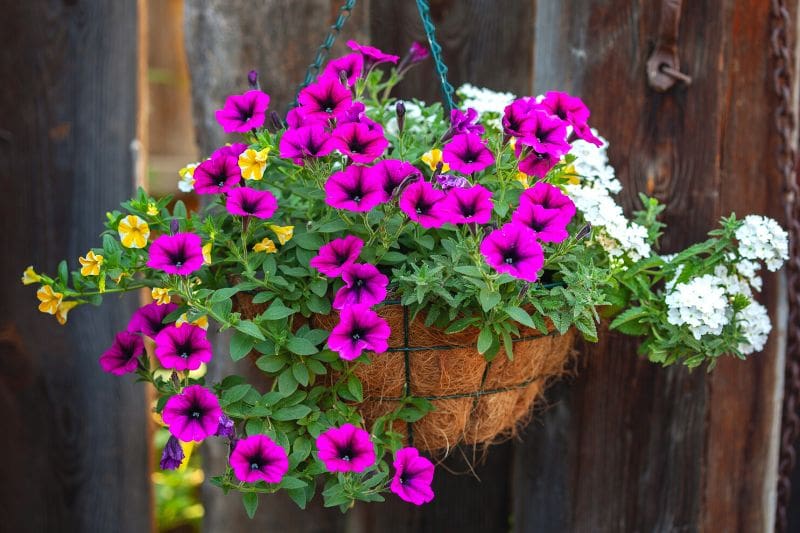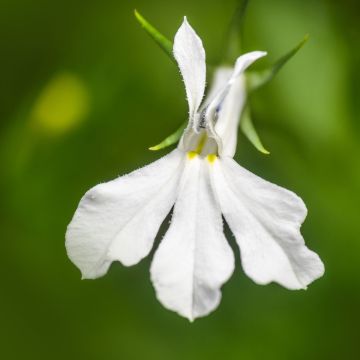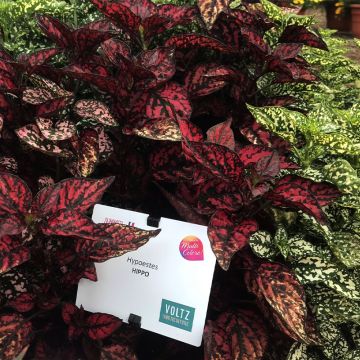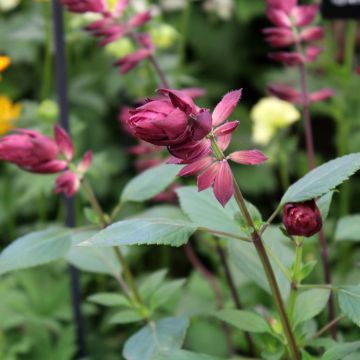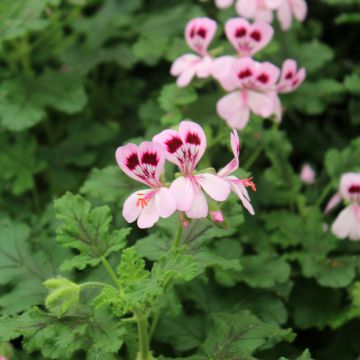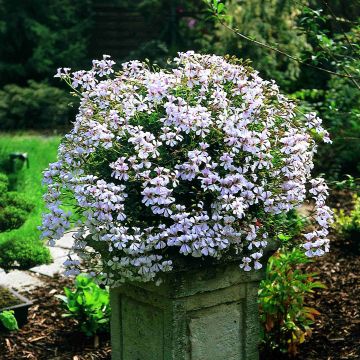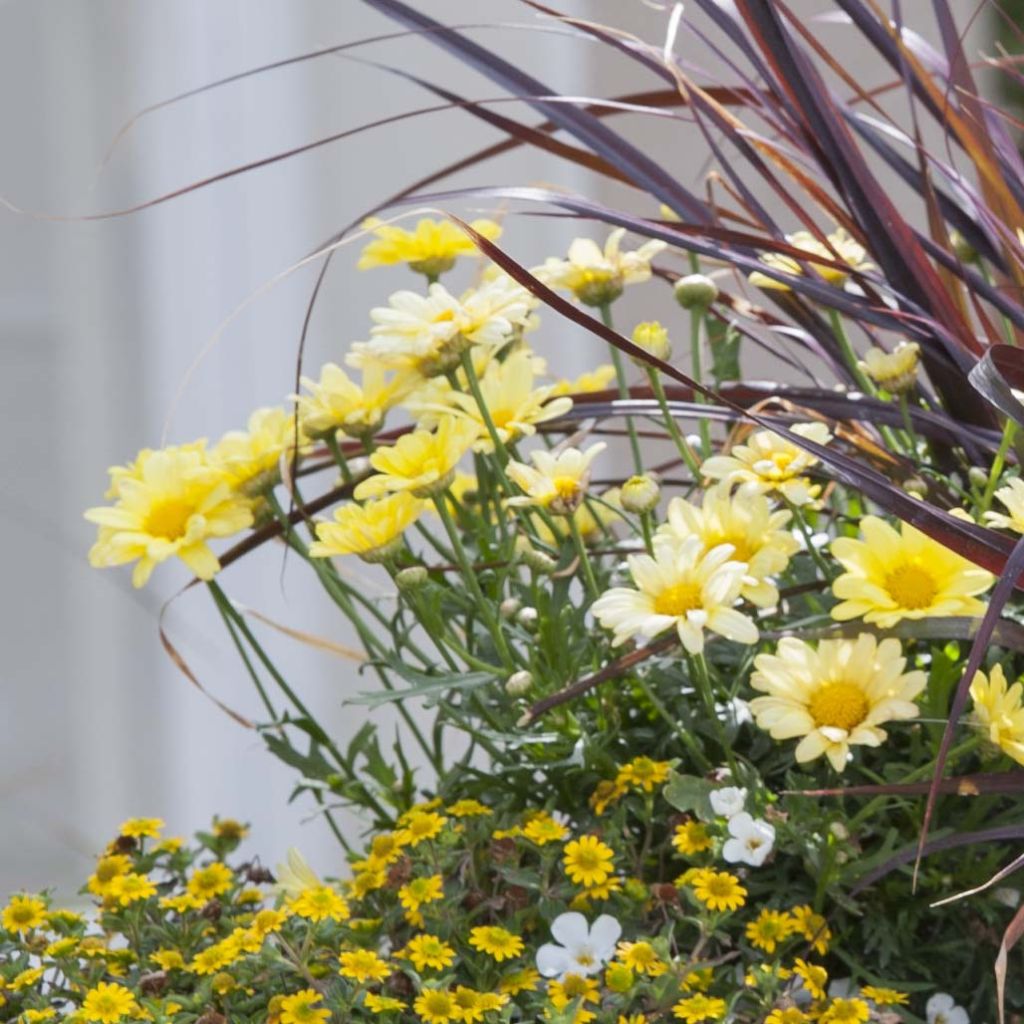

Argyranthemum frutescens Butterfly Yellow - Marguerite bush
Argyranthemum frutescens Butterfly Yellow - Marguerite bush
Argyranthemum frutescens Butterfly Yellow
Marguerite bush, Paris daisy, Marguerite shrub, Marguerite tree
Special offer!
Receive a €20 voucher for any order over €90 (excluding delivery costs, credit notes, and plastic-free options)!
1- Add your favorite plants to your cart.
2- Once you have reached €90, confirm your order (you can even choose the delivery date!).
3- As soon as your order is shipped, you will receive an email containing your voucher code, valid for 3 months (90 days).
Your voucher is unique and can only be used once, for any order with a minimum value of €20, excluding delivery costs.
Can be combined with other current offers, non-divisible and non-refundable.
Why not try an alternative variety in stock?
View all →This plant carries a 6 months recovery warranty
More information
We guarantee the quality of our plants for a full growing cycle, and will replace at our expense any plant that fails to recover under normal climatic and planting conditions.
Would this plant suit my garden?
Set up your Plantfit profile →
Description
The AnthemisorArgyranthemum frutescens 'Butterfly', a bright, lemon-yellow Canary Island daisy, is part of the plants generally grouped under the name chrysanthemum. This recent and vigorous variety, selected for its performance in the garden, is not afraid of heat, allowing it to flower almost continuously for as long as the summer lasts, so much so that it is sometimes difficult to see its beautiful, dark green, lobed foliage. Not very hardy, this fast-growing perennial plant is grown as an annual in sunny, well-drained soil. It is an ideal variety for large flowering pots, but also very beautiful in rock gardens or borders.
The Argyranthemum frutescens is a woody and tender perennial native to the Canary Islands, whose excellent ability to be grown in pots has piqued the interest of hybridizers who have developed numerous cultivars that are increasingly brilliant and easier to grow for enthusiasts.
The 'Butterfly' selection was born in the USA under the Indiana sun. More compact than the standard variety, the plant will reach a height of 60 cm (24in) with a spread of 40-50 cm (16-20in). It grows rapidly. The abundant flowering takes place from June to October, even more generously if the faded flowers are regularly removed. The flowers resemble small 4 cm (2in) daisies, they are heads. Around a small golden-yellow center radiate wide, rounded ray florets, gradually changing from lemon yellow, slightly darker at the base and lighter on the periphery, giving the head a particularly bright appearance. The stems are highly branched, with pinnatilobate leaves, forming a very abundant decorative foliage, dark green, aromatic when crushed and very light in appearance. It is evergreen above freezing temperatures. The Argyranthemum frutescens is hardy up to -3/-4°C (26.6/24.8°F).
Being sun lovers par excellence, frutescent anthems fear excessive moisture in winter more than anything else. In areas spared from frost, plant them in well-drained, slightly acidic, neutral, or strongly alkaline soil. Forming delightful, fully bloomed tufts in no time, the 'Butterfly' Chrysanthemum looks superb alongside fennel, perennial flax, borage, cosmos, or blue and white nigellas. It can be planted in country-style borders with Asphodeline lutea, Asclepias tuberosa, but also in more carefully maintained flower beds, rock gardens, stair borders, or at the bend of a path in a steep garden. And of course, it offers a fantastic display in flowering pots, alongside Calibrachoa and dwarf artemisias, silver baskets, and ageratums. It can also be combined in a large container with purple brachyscome, Sanvitalia, pale yellow nemesia, and California poppy for an orange touch, with all these delicate flowers complementing the stronger presence of a Heuchera Lime Marmalade, for example.
Note: Please be aware that our plug plants are professional products reserved for experienced gardeners: upon receipt, transplant and store them under cover (veranda, greenhouse, cold frame) at a temperature above 14°C (57.2°F) for a few weeks before being planted outdoors once the risk of frost has definitively passed.
Argyranthemum frutescens Butterfly Yellow - Marguerite bush in pictures


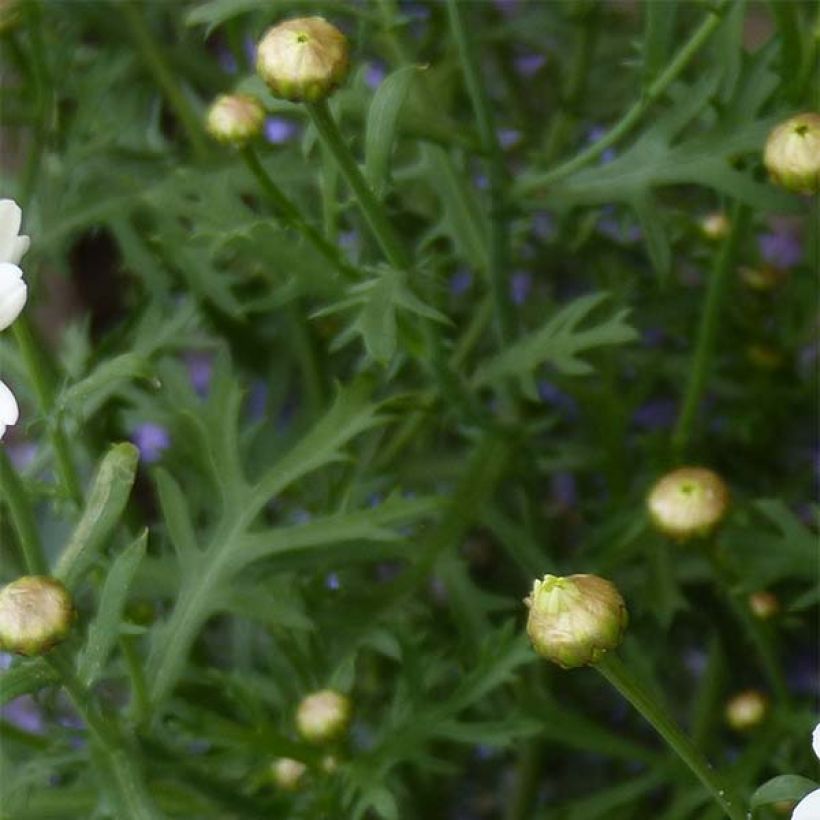

Flowering
Foliage
Plant habit
Botanical data
Argyranthemum
frutescens
Butterfly Yellow
Asteraceae
Marguerite bush, Paris daisy, Marguerite shrub, Marguerite tree
Cultivar or hybrid
Planting and care
Growing Argyranthemum frutescens 'Butterfly' in pots is easy in all regions. Plant the shrubby Anthémis in a light and fertile substrate, composed of compost and sand, enriched with a little compost. Good drainage is important, and watering should be abundant but spaced out, allowing the soil to dry slightly between waterings. The pots can be overwintered in a bright and well-ventilated space, but one that is not too heated to keep the plants frost-free. It is useful to regularly remove faded flowers and prune the branches slightly during the flowering period; this encourages the plant to develop new flower buds.
Being sun-lovers par excellence, anthemis are particularly sensitive to excess humidity, especially in winter. In mild climates, plant them directly in the ground, in well-drained soil that is slightly acidic, neutral, or strongly calcareous. These plants are not demanding when it comes to soil quality. However, in heavy soil, their lifespan is shorter than in poor and dry soil. Their cold resistance is greater when the soil is dry. Cutting the stems back to 20 cm (8in) above the ground in early September or in spring promotes the growth of new clumps and, towards the end of the season, a slight rebloom.
Planting period
Intended location
Care
Planting & care advice
This item has not been reviewed yet - be the first to leave a review about it.
Similar products
Haven't found what you were looking for?
Hardiness is the lowest winter temperature a plant can endure without suffering serious damage or even dying. However, hardiness is affected by location (a sheltered area, such as a patio), protection (winter cover) and soil type (hardiness is improved by well-drained soil).

Photo Sharing Terms & Conditions
In order to encourage gardeners to interact and share their experiences, Promesse de fleurs offers various media enabling content to be uploaded onto its Site - in particular via the ‘Photo sharing’ module.
The User agrees to refrain from:
- Posting any content that is illegal, prejudicial, insulting, racist, inciteful to hatred, revisionist, contrary to public decency, that infringes on privacy or on the privacy rights of third parties, in particular the publicity rights of persons and goods, intellectual property rights, or the right to privacy.
- Submitting content on behalf of a third party;
- Impersonate the identity of a third party and/or publish any personal information about a third party;
In general, the User undertakes to refrain from any unethical behaviour.
All Content (in particular text, comments, files, images, photos, videos, creative works, etc.), which may be subject to property or intellectual property rights, image or other private rights, shall remain the property of the User, subject to the limited rights granted by the terms of the licence granted by Promesse de fleurs as stated below. Users are at liberty to publish or not to publish such Content on the Site, notably via the ‘Photo Sharing’ facility, and accept that this Content shall be made public and freely accessible, notably on the Internet.
Users further acknowledge, undertake to have ,and guarantee that they hold all necessary rights and permissions to publish such material on the Site, in particular with regard to the legislation in force pertaining to any privacy, property, intellectual property, image, or contractual rights, or rights of any other nature. By publishing such Content on the Site, Users acknowledge accepting full liability as publishers of the Content within the meaning of the law, and grant Promesse de fleurs, free of charge, an inclusive, worldwide licence for the said Content for the entire duration of its publication, including all reproduction, representation, up/downloading, displaying, performing, transmission, and storage rights.
Users also grant permission for their name to be linked to the Content and accept that this link may not always be made available.
By engaging in posting material, Users consent to their Content becoming automatically accessible on the Internet, in particular on other sites and/or blogs and/or web pages of the Promesse de fleurs site, including in particular social pages and the Promesse de fleurs catalogue.
Users may secure the removal of entrusted content free of charge by issuing a simple request via our contact form.
The flowering period indicated on our website applies to countries and regions located in USDA zone 8 (France, the United Kingdom, Ireland, the Netherlands, etc.)
It will vary according to where you live:
- In zones 9 to 10 (Italy, Spain, Greece, etc.), flowering will occur about 2 to 4 weeks earlier.
- In zones 6 to 7 (Germany, Poland, Slovenia, and lower mountainous regions), flowering will be delayed by 2 to 3 weeks.
- In zone 5 (Central Europe, Scandinavia), blooming will be delayed by 3 to 5 weeks.
In temperate climates, pruning of spring-flowering shrubs (forsythia, spireas, etc.) should be done just after flowering.
Pruning of summer-flowering shrubs (Indian Lilac, Perovskia, etc.) can be done in winter or spring.
In cold regions as well as with frost-sensitive plants, avoid pruning too early when severe frosts may still occur.
The planting period indicated on our website applies to countries and regions located in USDA zone 8 (France, United Kingdom, Ireland, Netherlands).
It will vary according to where you live:
- In Mediterranean zones (Marseille, Madrid, Milan, etc.), autumn and winter are the best planting periods.
- In continental zones (Strasbourg, Munich, Vienna, etc.), delay planting by 2 to 3 weeks in spring and bring it forward by 2 to 4 weeks in autumn.
- In mountainous regions (the Alps, Pyrenees, Carpathians, etc.), it is best to plant in late spring (May-June) or late summer (August-September).
The harvesting period indicated on our website applies to countries and regions in USDA zone 8 (France, England, Ireland, the Netherlands).
In colder areas (Scandinavia, Poland, Austria...) fruit and vegetable harvests are likely to be delayed by 3-4 weeks.
In warmer areas (Italy, Spain, Greece, etc.), harvesting will probably take place earlier, depending on weather conditions.
The sowing periods indicated on our website apply to countries and regions within USDA Zone 8 (France, UK, Ireland, Netherlands).
In colder areas (Scandinavia, Poland, Austria...), delay any outdoor sowing by 3-4 weeks, or sow under glass.
In warmer climes (Italy, Spain, Greece, etc.), bring outdoor sowing forward by a few weeks.






























